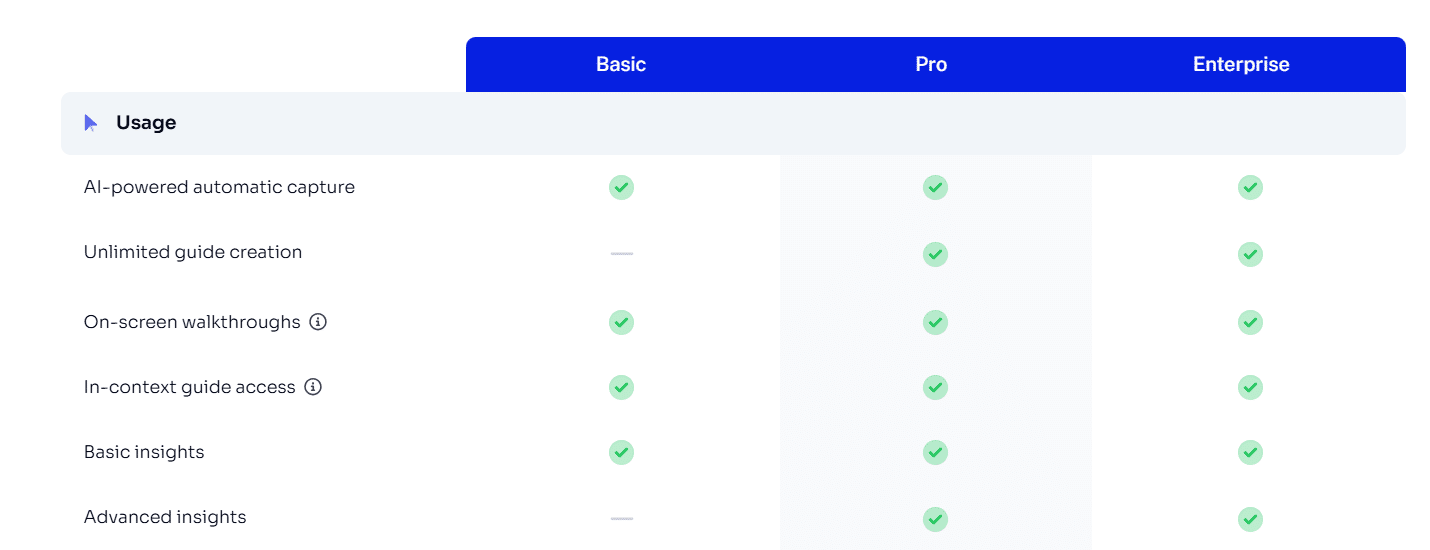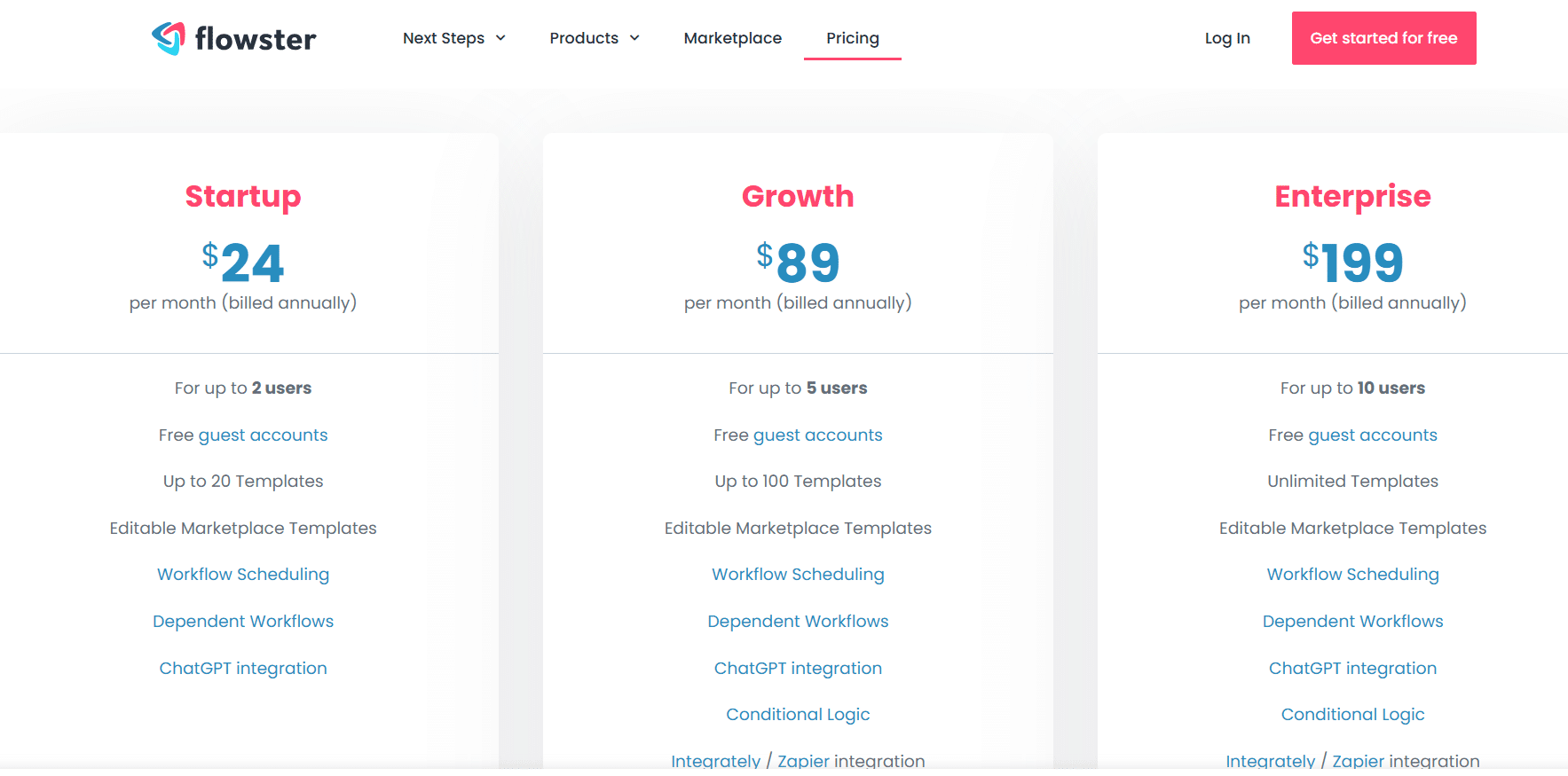Creating Standard Operating Procedures (SOPs) is essential for businesses to ensure consistency, efficiency, and compliance. With the rise of AI, many tools now automate the process, making it easier to document workflows. In this article, we’ll explore the best software for SOP creation, including AI-powered and traditional tools, and how they work.
AI-Powered SOP Software
AI-powered SOP tools leverage automation, machine learning, and natural language processing to generate, structure, and optimize SOPs. These tools save time by capturing real-time workflows or analyzing existing data.
Scribe
How it Works:
- Automatically records user actions on-screen and converts them into a step-by-step SOP.
- Captures screenshots and highlights actions to create visually engaging documentation.
- Allows users to edit and customize SOPs before publishing.
The paid plan starts at $12/ per month. Minimum of 5 seats.

Best For: Organizations looking for a fast, automated way to create step-by-step guides with minimal manual input.
Try Scibe for free: https://scribehow.com/
You can find more information about pricing and features here: https://scribehow.com/pricing
Pros:
– Easy guide creation
– AI enhances clarity
– Versatile sharing options
Cons:
– Limited formatting options
– May require manual adjustments for complex UIs
Tango.ai
How it Works:
- Runs in the background while users perform tasks, generating SOPs with screenshots.
- Offers automatic annotations and step-by-step instructions.
- Integrates with tools like Slack and Notion for easy sharing.
Best For: Businesses needing quick, AI-driven SOPs for software-based processes.
There’s a free plan. Paid plans start at $20/month per person.
For more information about pricing and features, visit: https://www.tango.ai/pricing
Pros:
– Quick creation of training materials
– Seamless integration with various tools
Cons:
– Limited customization in the free version
– Higher tiers may be costly for small businesses
Trainual
How it Works:
- Uses AI to structure and format SOPs based on industry best practices.
- Allows businesses to build interactive training modules.
- Supports multimedia content, quizzes, and compliance tracking.
Best For: Companies that need SOPs for training and onboarding employees.
For more information about pricing and features, visit: https://trainual.com/pricing
Pros:
– Centralizes company knowledge
– Tracks training completion
– Visualizes team structures
Cons:
– Sparse integrations without Zapier
– Formatting can be tedious
– Group-based pricing may not suit small teams
Flowster
How it Works:
- Provides AI-generated SOP templates tailored to different business operations.
- Helps automate workflows and assign tasks.
- Supports integrations with third-party software for smooth process automation.
Best For: Businesses that need pre-built SOP templates and workflow automation.
Plans start at $24/month.
For more information on pricing and features, visit https://flowster.app/pricing/

Pros:
– Automates repetitive tasks
– Enhances team productivity
– Customizable workflows
Cons:
– Learning curve for complex workflows
– Customization may require technical expertise
Traditional SOP Documentation Software
While AI-powered tools are efficient, some businesses prefer manual control over SOP creation. These traditional tools offer structured documentation, collaboration features, and cloud-based storage.
Process Street
- Provides a checklist-based system for SOP creation and workflow tracking.
- Allows teams to collaborate on SOPs in real time.
- It supports automation by integrating tools like Zapier and Slack.
Best For: Organizations that rely on checklists and need a structured SOP approval process.
SweetProcess
- Designed for documenting procedures, policies, and processes.
- Includes a centralized knowledge base for easy access to SOPs.
- Offers team collaboration and role-based access control.
Best For: Small businesses and teams that need a straightforward SOP management system.
Way We Do
- Provides cloud-based SOP storage and access control.
- Includes process automation and policy enforcement features.
- Offers real-time collaboration on SOP updates.
Best For: Organizations looking for a compliance-focused SOP tool.
For more information, visit: https://www.waywedo.com/
Tallyfy
- Helps document and automate recurring processes.
- Features drag-and-drop workflow automation.
- Supports real-time tracking of SOP execution.
Best For: Businesses that want to streamline and automate their SOP execution.
Risks of Using AI-Driven Software for Creating SOPs
AI-driven software for automating SOP (Standard Operating Procedure) creation offers impressive efficiencies, but it’s not without its downsides. Here are some key disadvantages to consider:
Inaccurate or Incomplete Outputs
AI-generated SOPs often require human review to verify accuracy. These tools may omit critical steps, include redundant actions, or misinterpret intent, especially if the input data is unclear or inconsistent.
Limited Flexibility in Complex Processes
AI tools are better at handling linear, rule-based tasks. For processes that involve decision-making, cross-functional dependencies, or exceptions, AI may oversimplify or miss key decision trees.
Overreliance Can Undermine Process Ownership
When teams rely too heavily on AI to document and maintain SOPs, they risk disengaging from the actual process. This can reduce accountability and lead to outdated or poorly adopted procedures.
Privacy and Security Concerns
Using cloud-based AI tools may expose sensitive operational data, especially if SOPs include proprietary methods, compliance details, or customer information. In industries like healthcare or finance, data breaches or compliance violations could result from improperly handling sensitive content.
Reduced Customization
AI-generated SOPs might not align with a company’s tone, branding, or internal culture. This can impact how relatable or usable the documents are, especially for frontline employees.
Ongoing Maintenance Still Requires Human Input
AI can automate creation, but SOPs still need periodic review and updates. Relying solely on AI without a defined update cadence may lead to process drift and outdated documentation.
While AI-driven SOP automation can accelerate documentation, improve consistency, and reduce manual effort, it’s best used as a tool to assist—not replace—human expertise. Organizations should approach it with a balanced strategy: combine AI’s speed with human oversight to ensure accuracy, context, and adoption.
Olutobi
I write about business and project management.
10+ years working in program management. I've worked in health-tech, community health, regulatory affairs and quality assurance.



